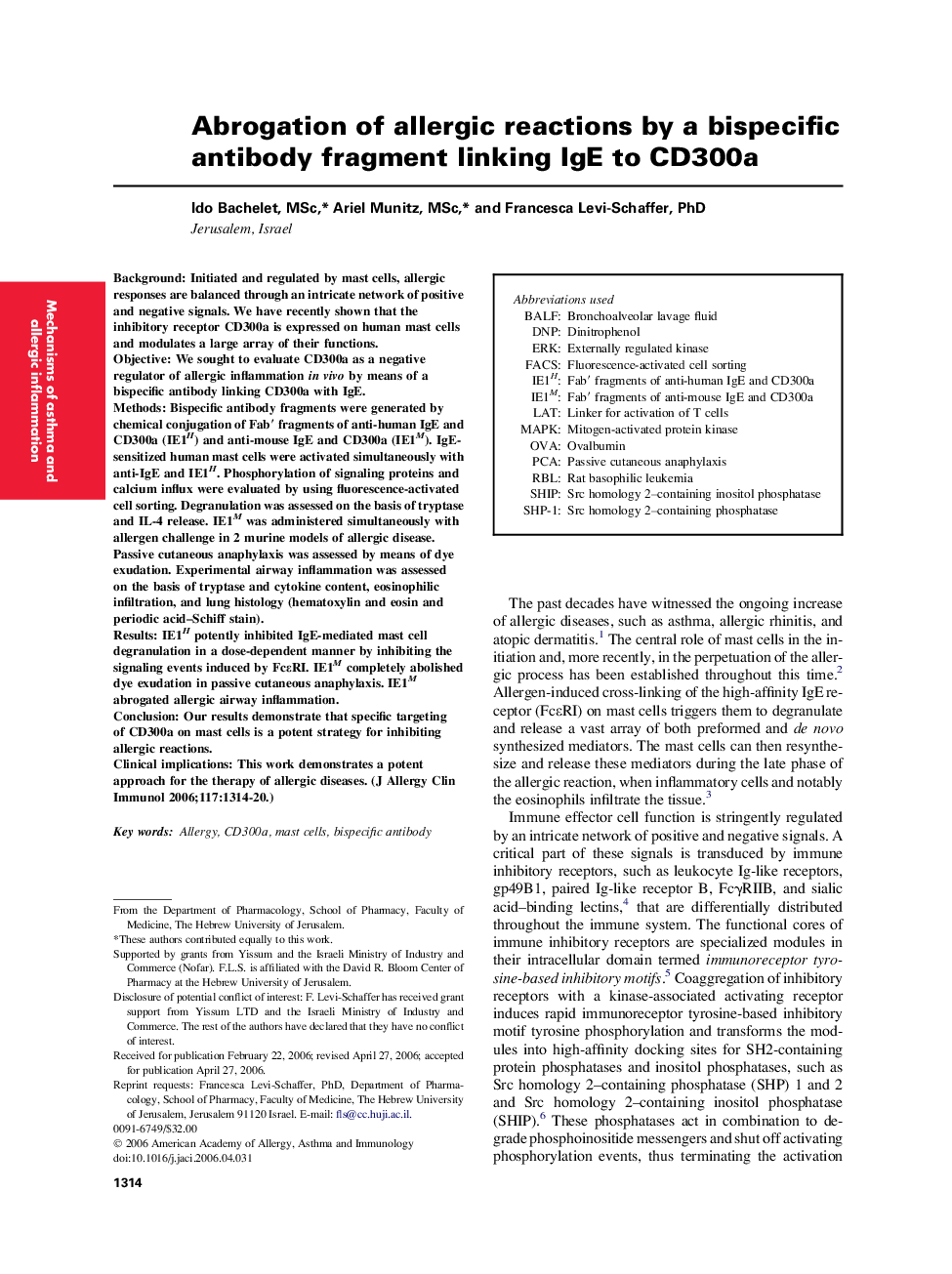| Article ID | Journal | Published Year | Pages | File Type |
|---|---|---|---|---|
| 3203692 | Journal of Allergy and Clinical Immunology | 2006 | 7 Pages |
BackgroundInitiated and regulated by mast cells, allergic responses are balanced through an intricate network of positive and negative signals. We have recently shown that the inhibitory receptor CD300a is expressed on human mast cells and modulates a large array of their functions.ObjectiveWe sought to evaluate CD300a as a negative regulator of allergic inflammation in vivo by means of a bispecific antibody linking CD300a with IgE.MethodsBispecific antibody fragments were generated by chemical conjugation of Fab′ fragments of anti-human IgE and CD300a (IE1H) and anti-mouse IgE and CD300a (IE1M). IgE-sensitized human mast cells were activated simultaneously with anti-IgE and IE1H. Phosphorylation of signaling proteins and calcium influx were evaluated by using fluorescence-activated cell sorting. Degranulation was assessed on the basis of tryptase and IL-4 release. IE1M was administered simultaneously with allergen challenge in 2 murine models of allergic disease. Passive cutaneous anaphylaxis was assessed by means of dye exudation. Experimental airway inflammation was assessed on the basis of tryptase and cytokine content, eosinophilic infiltration, and lung histology (hematoxylin and eosin and periodic acid–Schiff stain).ResultsIE1H potently inhibited IgE-mediated mast cell degranulation in a dose-dependent manner by inhibiting the signaling events induced by FcɛRI. IE1M completely abolished dye exudation in passive cutaneous anaphylaxis. IE1M abrogated allergic airway inflammation.ConclusionOur results demonstrate that specific targeting of CD300a on mast cells is a potent strategy for inhibiting allergic reactions.Clinical implicationsThis work demonstrates a potent approach for the therapy of allergic diseases.
